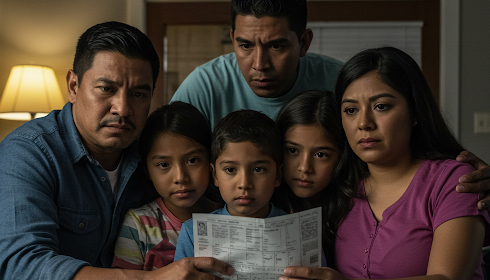
U.S. Healthcare Affordability Crisis: A Growing Challenge for Millions
Recent findings from the West Health-Gallup Healthcare Affordability Index indicate that the challenges associated with healthcare affordability in the United States have escalated significantly. More than one-third of Americans, approximately 91 million individuals, report that they would be unable to access quality healthcare if required today, according to the Index. This report, which has monitored healthcare affordability since 2021, indicates a consistent decline in access, particularly affecting vulnerable populations.
The Index classifies Americans into three distinct categories according to their capacity to afford healthcare: Cost Secure, Cost Insecure, and Cost Desperate. At present, 51% of Americans are identified as cost secure, marking the lowest percentage recorded since 2021. Currently, 11% of U.S. adults, or approximately 29 million individuals, face significant financial barriers in accessing essential healthcare services.
The data reveals significant disparities affecting Black and Hispanic communities. Approximately 46% of Black Americans and 52% of Hispanic Americans indicated that they are unable to afford quality healthcare. In contrast, individuals in higher-income households in the United States exhibited a consistent trend. The situation has deteriorated notably for individuals earning below $24,000 per year, with 64% indicating challenges, while 57% of households earning between $24,000 and $48,000 also reported facing affordability concerns. The data indicates an increase of 11 to 12 points from 2023, underscoring a worsening situation for low-income families.
Tim Lash, president of the West Health Policy Centre, addressed the concerning trend: “The rising trajectory in the inability to pay for healthcare is a disturbing trend that is likely to continue and even accelerate.” Urgent policy action is required at both state and federal levels to prevent a growing number of Americans from lacking access to treatment or facing difficult decisions between funding medical care and covering other essential expenses. The costs, both human and economic, are substantial.
Findings from the Gallup survey are further corroborated by secondary data. Senior researcher Dan Witters observed that healthcare affordability and access are deteriorating across the nation, with this problem being particularly severe among Black, Hispanic, and lower-income adults. The data indicates that this group exhibits the most significant disparity in access to care recorded to date, with a growing number of Americans facing heightened challenges annually.
The index indicates that healthcare affordability varies among different age groups. Only 4% of Americans aged 65 and above are classified as cost desperate, while the percentages increase among younger demographics: 11% for individuals aged 50-64 and 14% for those aged 50 and under. This disparity indicates that younger and lower-income Americans face heightened vulnerability to the increasing costs associated with healthcare.
Secondary data and expert commentary emphasise that this crisis extends beyond mere statistics. The statement highlights the significant difficulties encountered by numerous individuals who must prioritise essential healthcare over other fundamental necessities, such as food and shelter. The increasing disparity in healthcare affordability necessitates thorough policy interventions. Experts emphasise the need for enhanced access, improved insurance coverage, and strategies to manage escalating medical costs to avert further declines in the U.S. healthcare system.
Recent data on healthcare affordability in the U.S. reveals a systemic crisis impacting the most vulnerable populations. The evident differences in income and ethnicity highlight the pressing need for policy action to guarantee that healthcare is recognised as a right rather than a privilege. It is crucial to address this issue to ensure the protection of public health and maintain economic stability in the nation.